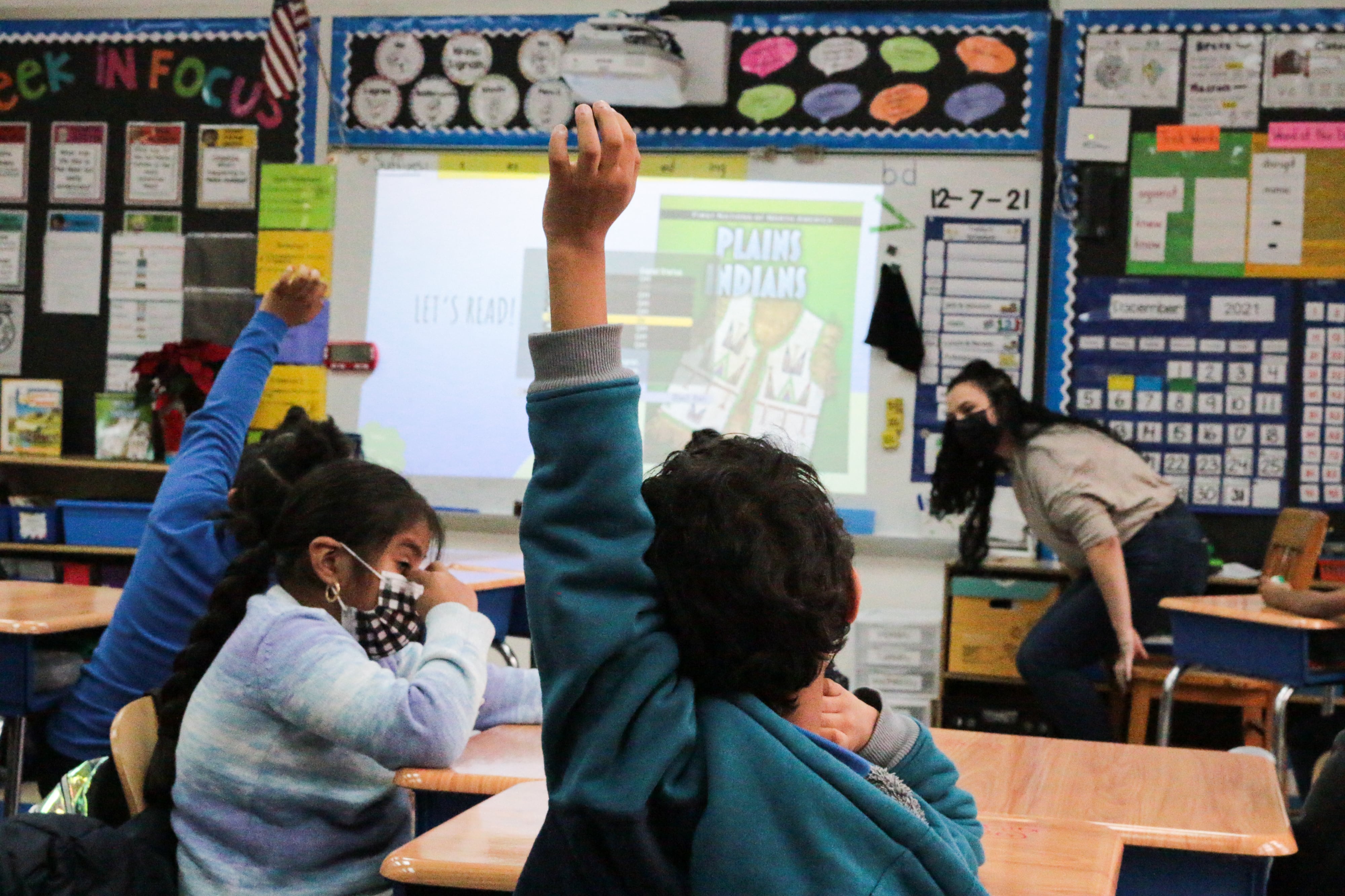New York’s state lawmakers approved a budget this week that will usher in record funding for schools and a controversial plan allowing 14 charter schools to open in New York City.
The budget, finalized more than a month past the April 1 deadline, will increase aid for schools by $3 billion compared to last year. That brings the total state support for schools to $34 billion, with more than a third of that going to the nation’s largest district, New York City public schools. (Even so, because of city and federal funding cuts, Mayor Eric Adams is proposing to slash the education department’s budget by nearly $1 billion.)
The late budget caused frustration among local lawmakers and education organizations. Even though there was no dispute over school funding this year, local leaders were still waiting to know final details, such as how much they could expect to receive, said Bob Lowry, deputy director for advocacy and communication at the state’s Council of School Superintendents.
“It’s been aggravating that it’s dragged on without any apparent urgency,” Lowry said.
Unlike past years, funding was not a hot-button issue since lawmakers had previously agreed to significantly boost dollars for schools. However, in a surprising twist, charter schools emerged as a sticking point in final budget negotiations.
Gov. Kathy Hochul’s proposal to open more than 100 charter schools across the five boroughs was one of the final issues that lawmakers picked apart. They reached a deal last week to open just a chunk of the schools Hochul had proposed.
The day after the deal was struck, Hochul announced that she and Democratic leaders had conceptually agreed to a final budget.
Here’s a look at two big education highlights from the state budget:
‘Zombie charters’ allowed to open in the city
In 2019, New York City reached a state-imposed cap of how many charter schools could open across the five boroughs. That cap included 14 “zombie” charter schools, which have either closed or never opened.
As part of the budget, 14 of those zombies will be allowed to open in New York City, while another eight will be allowed to open elsewhere. The city schools can only open in districts where the total charter school enrollment is 55% or less than that of education department-run school enrollment, according to budget records.
Hochul’s original proposal was pared down in the face of significant pushback from teachers unions, lawmakers, and advocates, who argued that the state needed to prioritize more resources for traditional public schools, which have struggled with declining enrollment.
Many charter advocates applauded the compromise, allowing the sector to expand its footprint in the city. Some operators, who were pre-approved to open schools in 2019 after the city had reached the cap, are expected to receive priority if they reapply now for a zombie charter, according to the SUNY Charter Schools Institute, one of two entities that can authorize charter schools to open. (The other is the New York State Board of Regents.)
Opponents to the proposal, including some local New York City officials, shared frustration.
“It took a month to convince the governor not to lift the cap on charter schools, which would pull vital funds from the traditional public school system, and even a month later, the governor insisted on reviving zombie charters,” Public Advocate Jumaane Williams said in a statement.
The city typically must cover rental costs for charters, but as part of the deal, Hochul agreed to use state funding to cover that cost.
School funding rises to record-high levels
The state’s $34 billion school funding plan includes a final, planned increase to Foundation Aid, the state’s main school funding formula that sends more money to higher need districts.
For years, boosting Foundation Aid was a contentious matter in Albany. While funding for schools increased under former Gov. Andrew Cuomo, he declined to fund Foundation Aid at the level the formula calculated for each district’s needs. After years of advocacy from policymakers, advocates, and lawmakers, Cuomo agreed in his final months in office to fully fund the formula over a three-year period.
Hochul agreed to stick to that plan, which was originally expected to boost Foundation Aid by $4 billion over that three-year period. That figure has grown by $800 million because of inflation.
New York City — which sends much of its Foundation Aid dollars directly to schools — will receive an increase of 5.5% in those funds compared to this current school year.
In total, New York City will receive $12.9 billion in funding for schools from the state — equivalent to 42% of what the mayor has proposed for the education department’s operating budget next year.
The mayor’s budget office projected receiving close to that from the state — about $12.7 billion — next year for city schools. But with drops in city and federal funding, Adams has proposed a nearly $1 billion smaller education department budget for next year.
Reema Amin is a reporter covering New York City public schools. Contact Reema at ramin@chalkbeat.org.






